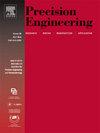空间引力波望远镜斜长耦合噪声抑制方法
IF 3.5
2区 工程技术
Q2 ENGINEERING, MANUFACTURING
Precision Engineering-Journal of the International Societies for Precision Engineering and Nanotechnology
Pub Date : 2025-05-03
DOI:10.1016/j.precisioneng.2025.04.032
引用次数: 0
摘要
TTL耦合噪声是评价空间引力波望远镜光学系统性能的重要指标。制造误差会导致波前误差、低阶像差和TTL耦合噪声抵消比偏离理想设计值,降低望远镜的性能。提出了一种抑制空间引力波望远镜制造中TTL耦合噪声的方法。首先分析了制造误差对TTL耦合噪声的影响机理,并建立了两者关系的数学模型。分析了整个抖动角范围内制造误差与TTL耦合噪声的关系,建立了制造过程中TTL耦合噪声的最大值模型。利用最大值模型建立了望远镜制造中抑制TTL耦合噪声的评价函数。以某空间引力波探测望远镜系统的典型结构为例进行设计优化。结果表明,采用本文方法和不采用本文方法对望远镜进行优化时,TTL耦合噪声系数小于±25 pm /μrad的概率分别为99%和50%。本文章由计算机程序翻译,如有差异,请以英文原文为准。
Tilt-to-length coupling noise suppression method for the manufacturing of space gravitational wave telescopes
Tilt-to-length (TTL) coupling noise is an essential index for evaluating the performance of space gravitational wave telescope optical systems. Manufacturing errors can cause wavefront error, low-order aberration ratio, and TTL coupling noise cancellation ratio to deviate from the ideal design value, degrading the performance of telescopes. This study proposes a method for suppressing TTL coupling noise in space gravitational wave telescope manufacturing. We first analyzed the influencing mechanism of manufacturing error on TTL coupling noise and established a mathematical model for the relationship. The relationship between manufacturing error and TLL coupling noise within the entire range of jitter angle was analyzed, and a maximum value model for TTL coupling noise in manufacturing was established. A maximum value model was used to establish an evaluation function for suppressing TTL coupling noise in telescope manufacturing. Taking the typical structure of a space gravitational wave detection telescope system as an example for design optimization. The results indicate that the probability of TTL coupling noise coefficient being less than ±25 p.m./μrad is 99 % and 50 %, respectively, when optimizing the telescope using and without the method proposed in this paper.
求助全文
通过发布文献求助,成功后即可免费获取论文全文。
去求助
来源期刊
CiteScore
7.40
自引率
5.60%
发文量
177
审稿时长
46 days
期刊介绍:
Precision Engineering - Journal of the International Societies for Precision Engineering and Nanotechnology is devoted to the multidisciplinary study and practice of high accuracy engineering, metrology, and manufacturing. The journal takes an integrated approach to all subjects related to research, design, manufacture, performance validation, and application of high precision machines, instruments, and components, including fundamental and applied research and development in manufacturing processes, fabrication technology, and advanced measurement science. The scope includes precision-engineered systems and supporting metrology over the full range of length scales, from atom-based nanotechnology and advanced lithographic technology to large-scale systems, including optical and radio telescopes and macrometrology.

 求助内容:
求助内容: 应助结果提醒方式:
应助结果提醒方式:


